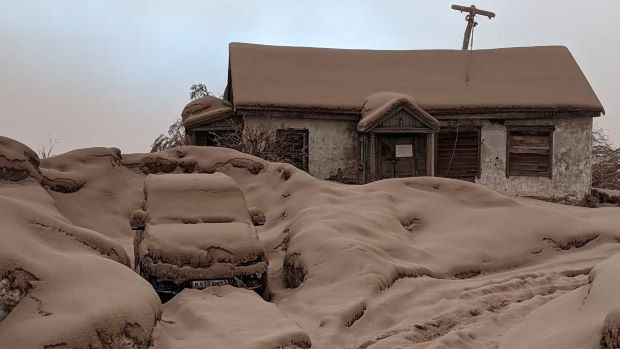Volcano erupts in Russia, spewing ash into the stratosphere
By Isabella Kwai
MOSCOW – An enormous, billowing grey plume high above a snowy landscape. Streets and cars blanketed in a thick layer of brown ash. A person in a hazmat suit making an ‘ash angel’ in the dust.
Those images were testimony to the power of the eruption on Tuesday (11) of Shiveluch, a volcano on the Kamchatka Peninsula in the Russian Far East, which spewed a giant ash cloud some 12 miles into the atmosphere, blanketing nearby villages and prompting emergency warnings for aircraft in the region, according to Russian officials.
Despite the volcano’s intense blowout, there were no immediate reports of any deaths or injuries on the sparsely populated, mountainous peninsula, which juts out between the Bering Sea and Sea of Okhotsk in the Northern Pacific Ocean.
Shiveluch, one of Russia’s most active volcanoes, erupted just after midnight, leaving at least 3 inches of ash covering nearby villages and closing some roads, according to a regional geophysical branch of the Russian Academy of Sciences.
“Gorgeous video of the ash cloud to remind us of the beauty and the force of nature,” the Russian Ministry for Foreign Affairs posted on Twitter, with a video of the billowing plume.
A service called the Kamchatka Volcanic Eruption Response Team, a branch of the Russian Institute of Volcanic Geology and Seismology, issued a red alert on Tuesday, warning that an eruption was underway with a significant emission of ash into the atmosphere. The service said that the ash cloud was drifting westward more than 250 miles from the volcano.
Danila Chebrov, the team’s director, told the news agency Reuters that the volcano had shown signs of an imminent eruption for at least a year and that further explosions could send more debris into the atmosphere. But he added that lava flows should not reach local villages.
Scientists believe that Shiveluch, with a summit more than 10,000 feet above sea level, has erupted around 60 times in the past 11,000 years. Its latest era of increased activity, which began in 1999, has led to frequent emissions of ash and lava that have grounded some flights, including an Alaska Airlines flight in 2015.
-New York Times



Comments are closed, but trackbacks and pingbacks are open.